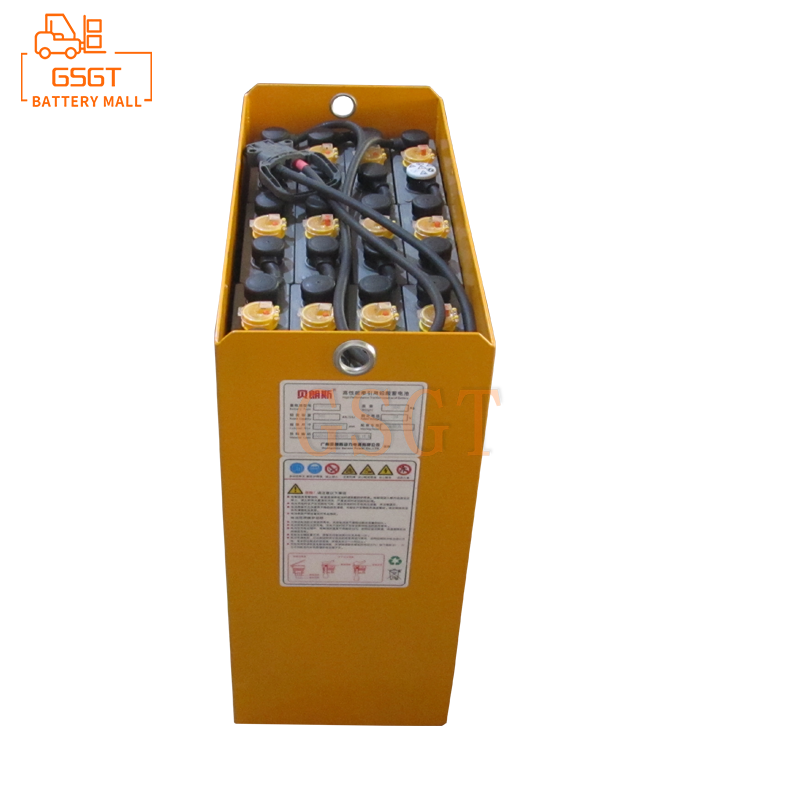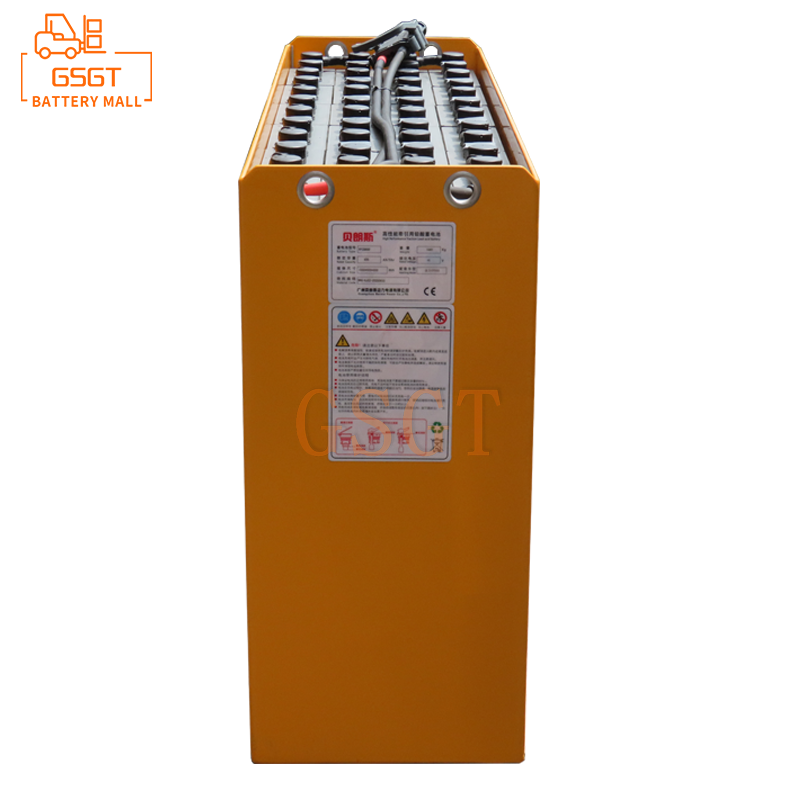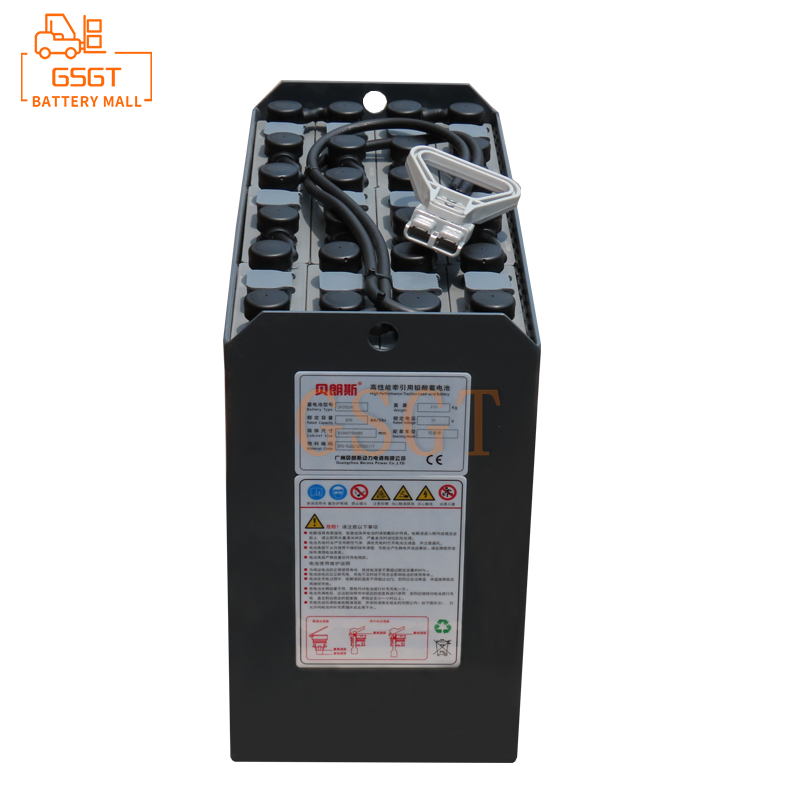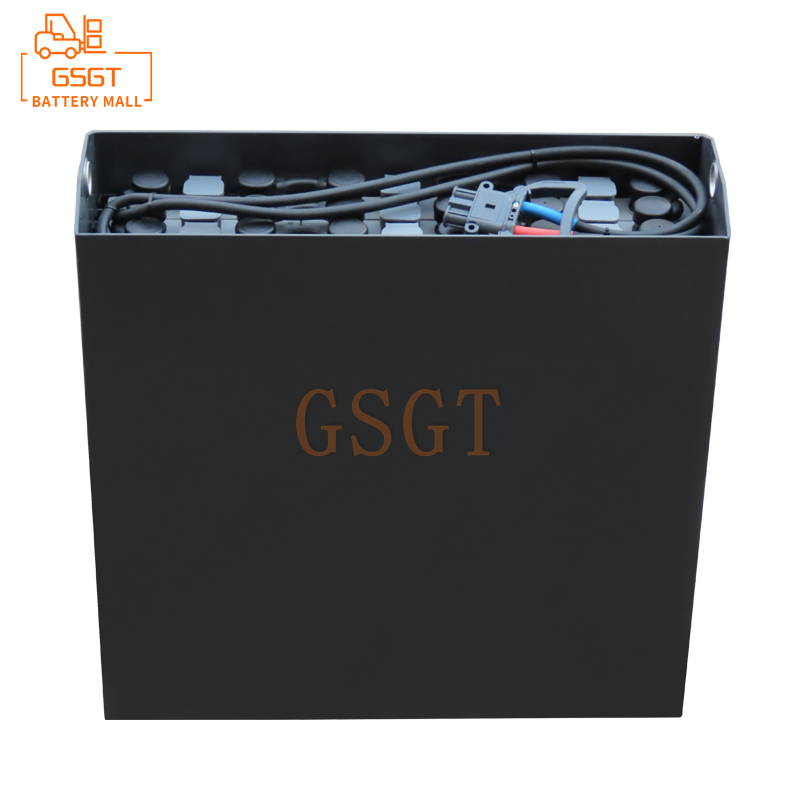Time:2025-07-07 10:43:11
Browse:576
In the power system of forklifts, lead-acid batteries play a crucial role, and the selection of plate materials directly affects the performance of the battery, which in turn profoundly influences the power output of the forklift. Understanding the influence of the material of lead-acid battery plates on the power output of forklifts is of undeniable significance for the efficient operation and maintenance of forklifts.
The plates of lead-acid batteries are mainly divided into positive plates and negative plates. Common plate materials include lead-antimony alloy, lead-calcium alloy, etc. The active material on the positive plate is mainly lead dioxide (PbO₂), which is dark brown. The active material on the negative plate is spongy pure lead (Pb), which appears bluish-gray. The grid frame of the plates is like the framework of a building, providing support for the active material and at the same time undertaking the important task of collecting and conducting current. During the cyclic charging and discharging process, the positive electrode grid is confronted with the challenge of corrosion. Due to the poor conductivity of the positive electrode active material, the grid needs to be coarser and denser to ensure conductivity. This is the case for the grid of tubular plates, which to some extent reduces the amount of active material coated and lowers the capacity of a single positive electrode plate. The negative electrode grid, on the other hand, can be designed to be finer and sparser because the negative electrode does not suffer from grid corrosion and the active material has better electrical conductivity, such as the grid of the paste-type plate.
Different plate materials have significant differences in the power output of forklifts. Taking lead-antimony alloy and lead-calcium alloy as examples, forklifts with lead-antimony alloy plates have relatively excellent high-current discharge performance. This is because lead-antimony alloy has certain properties that can provide a large current in an instant, meeting the demand for strong power when forklifts start, accelerate and handle heavy objects. However, lead-antimony alloys also have drawbacks. During the charging and discharging process, self-discharge is relatively severe, which means that the battery's power will be lost even when it is not in use, resulting in a shortened actual service life of the battery and affecting the endurance of the forklift. Meanwhile, after long-term use, lead-antimony alloy plates are prone to hardening, which increases the internal resistance of the battery and further affects the battery's performance and the power output of the forklift.
In contrast, the advantage of lead-calcium alloy plates lies in their relatively low self-discharge rate. This ensures that after the forklift has been parked for a period of time, the battery power loss is relatively small. When it is used again, it can maintain a good power state, guaranteeing the normal start and operation of the forklift. Moreover, the lead-calcium alloy plates have relatively good corrosion resistance, which can extend the service life of the battery. However, lead-calcium alloy plates may be slightly inferior to lead-antimony alloy plates in terms of high-current discharge capacity. In some operating conditions where forklifts require instantaneous strong power, they may not be able to provide sufficient current as quickly as lead-antimony alloy plates, resulting in a slightly slower power response of the forklift.
The material of the plates also affects the stability of the forklift's power output. High-quality plate materials can ensure that the active substances and the electrolyte react fully and stably during the battery's charging and discharging process, thereby keeping the output voltage and current of the battery relatively stable. When the material of the plates is poor or they are damaged or corroded during long-term use, the internal resistance of the battery will change, which in turn will cause fluctuations in the output voltage and current. Such fluctuations can cause unstable power during the operation of forklifts, manifested as inconsistent speed, making it difficult to precisely control the handling of goods. This not only affects work efficiency but may also cause potential damage to the goods and equipment.
So, how to choose lead-acid batteries with appropriate plate materials based on the usage scenarios of forklifts? If forklifts mainly operate in environments with frequent starts and stops and require sudden large power to move heavy objects, such as large logistics warehouses, lead-antimony alloy plate batteries may be more suitable. Although they have problems of self-discharge and plate hardening, their powerful high-current discharge performance can meet the power requirements of forklifts in such high-intensity working scenarios. For some forklift application scenarios with relatively low usage frequency and high requirements for battery endurance and service life, such as occasionally handling goods in some small factories, lead-calcium alloy plate batteries are more suitable. Their low self-discharge rate and good corrosion resistance can ensure that the battery of the forklift remains in good condition even when it is not used frequently. And it has a longer service life, reducing the cost and trouble of battery replacement.
What impact does the quality of the plate material have on the durability of the forklift's power output? High-quality plate materials perform better in structure and chemical stability. During long-term charge and discharge cycles, the structure and performance of the active material can be better maintained, and problems such as active material shedding and plate deformation are less likely to occur. This enables the battery to maintain good performance even after long-term use, continuously providing stable and sufficient power output for the forklift. On the contrary, low-quality plate materials may encounter various problems after a certain number of charge and discharge cycles, leading to a sharp decline in battery performance. The power output of the forklift will also weaken accordingly, unable to meet the normal working requirements. Frequent battery replacement is needed, increasing usage costs and downtime.
The material of lead-acid battery plates affects the power output of forklifts in multiple dimensions. In practical applications, we need to comprehensively consider factors such as the usage scenarios of forklifts, work intensity, and different requirements for battery performance, and carefully select lead-acid batteries with appropriate plate materials to ensure that forklifts can operate efficiently and stably, providing reliable power support for various material handling tasks.

$1105

$3810

$850

$1200

MESSAGE
Professional And Efficient
Security
Affordable Price
Professional Services